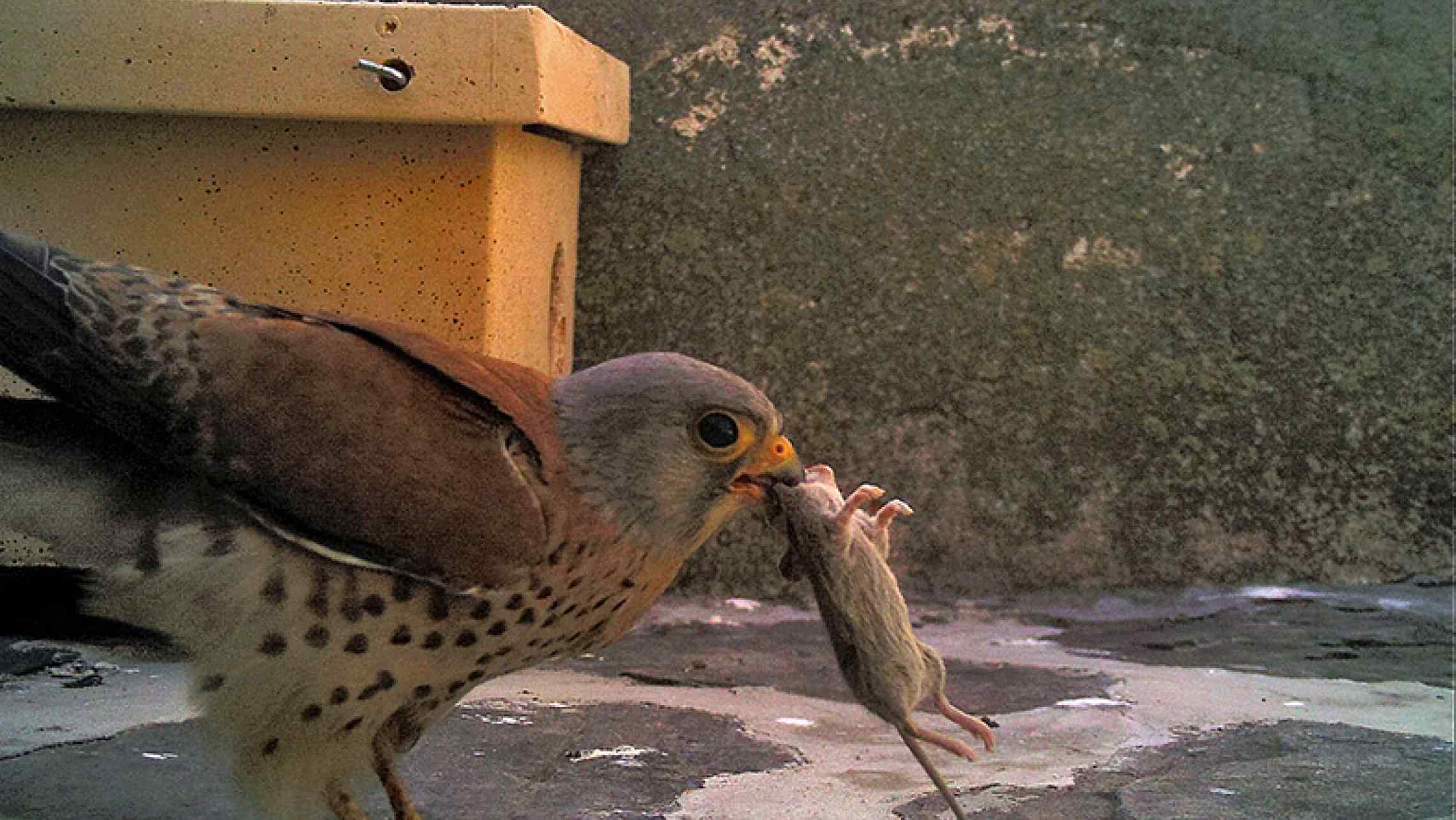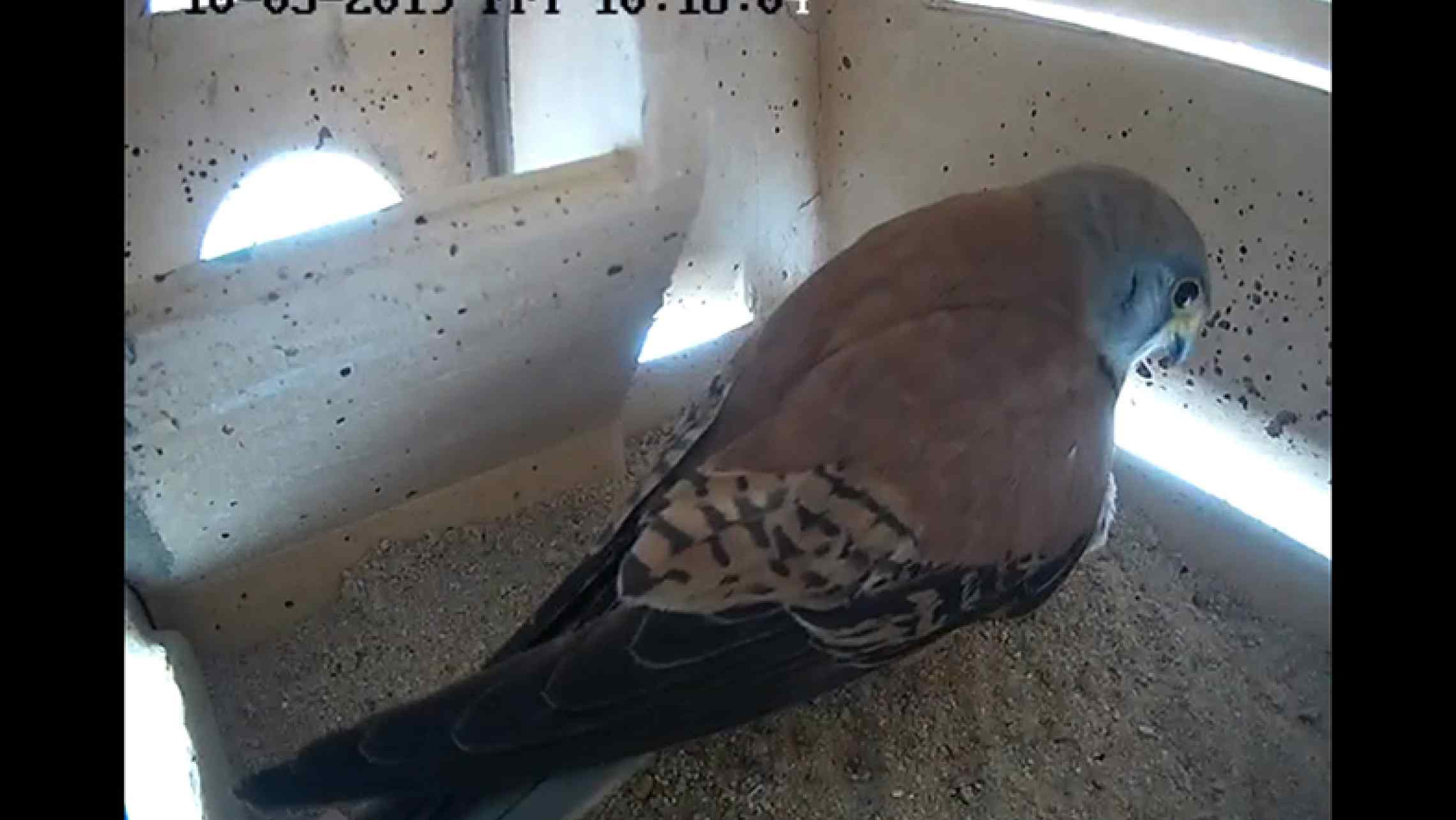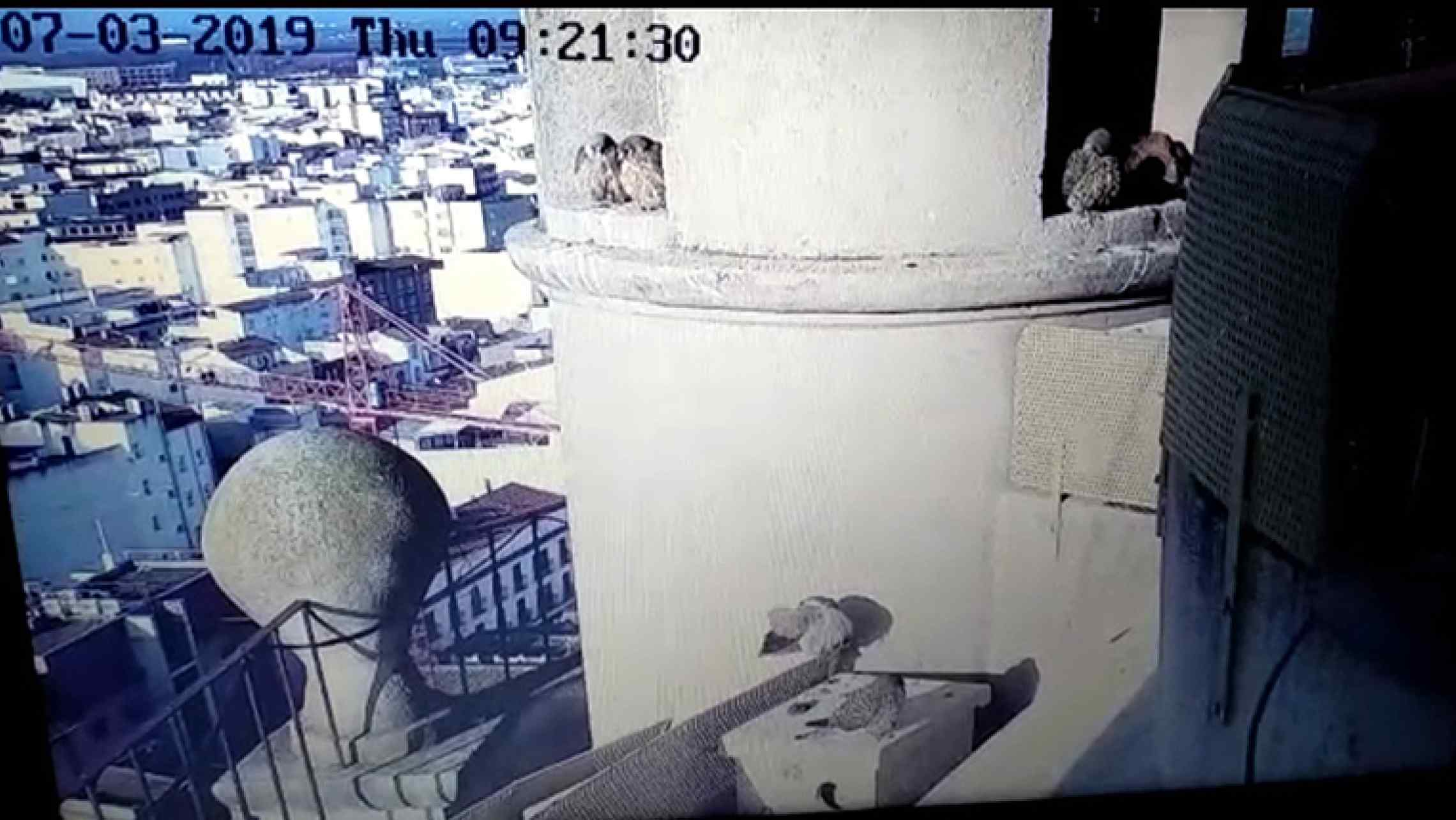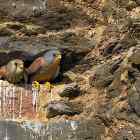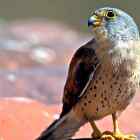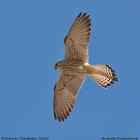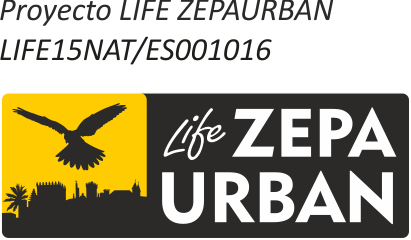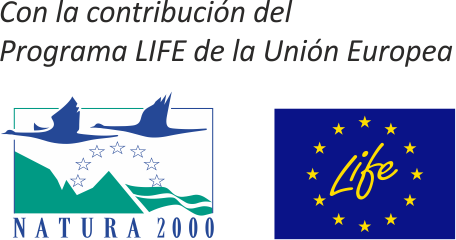Within the context of the follow-up activities for Action D1 of the LIFE-ZEPAURBAN project, “Monitoring of the impact of the project's conservation actions on the lesser kestrel in the urban SPAs of Extremadura”, monitoring is being carried out to discover the effectiveness of the conservation actions undertaken within the project's scope. To this end, periodic visits are being made to the buildings where activities have been undertaken under Actions C1 and C2 to determine the degree of acceptance of the improvements made. The number of pairs in the newly installed nests is recorded, both under cover and outdoors (A6), as well as occupation by other species of birds, incidence of predation on eggs and chicks, chicks falling from their nests, etc.
In some cases, in addition to direct observation, it is necessary to use indirect means such as camera traps and video surveillance as not all actions are visible with the usual means (binoculars and telescopes).
Thanks to these differing means, videos are being compiled that can be viewed on the project's YouTube channel (include link) both live and recorded. Likewise, photographs have been obtained that are helping us to discover the occupation of the nests and which are giving us valuable information on the behavior of the species, diet, etc.
It is worth noting the participation of the environmental conservation agents in this monitoring, as the means available in the LIFE-ZEPAURBAN project are helping them to undertake their usual work of monitoring the lesser kestrel colonies. In the same way, their contribution is enriching the information we have on nest occupation, as theirs is a network that spans throughout the territory. Thanks to the agents, the occupation of the nests installed under Action A6 in Albuquerque, Jerez de los Caballeros, and Trujillo --among other locations-- has been known.
Finally, information is being received on the occupation of the nests from the local population and from ornithologists who are also making important contributions to the project's monitoring.
We at the LIFE-ZEPAURBAN project we want to thank all those who in one way or another have contributed information to the project. Given the critical situation of the species, any data on the colonies can be key.
